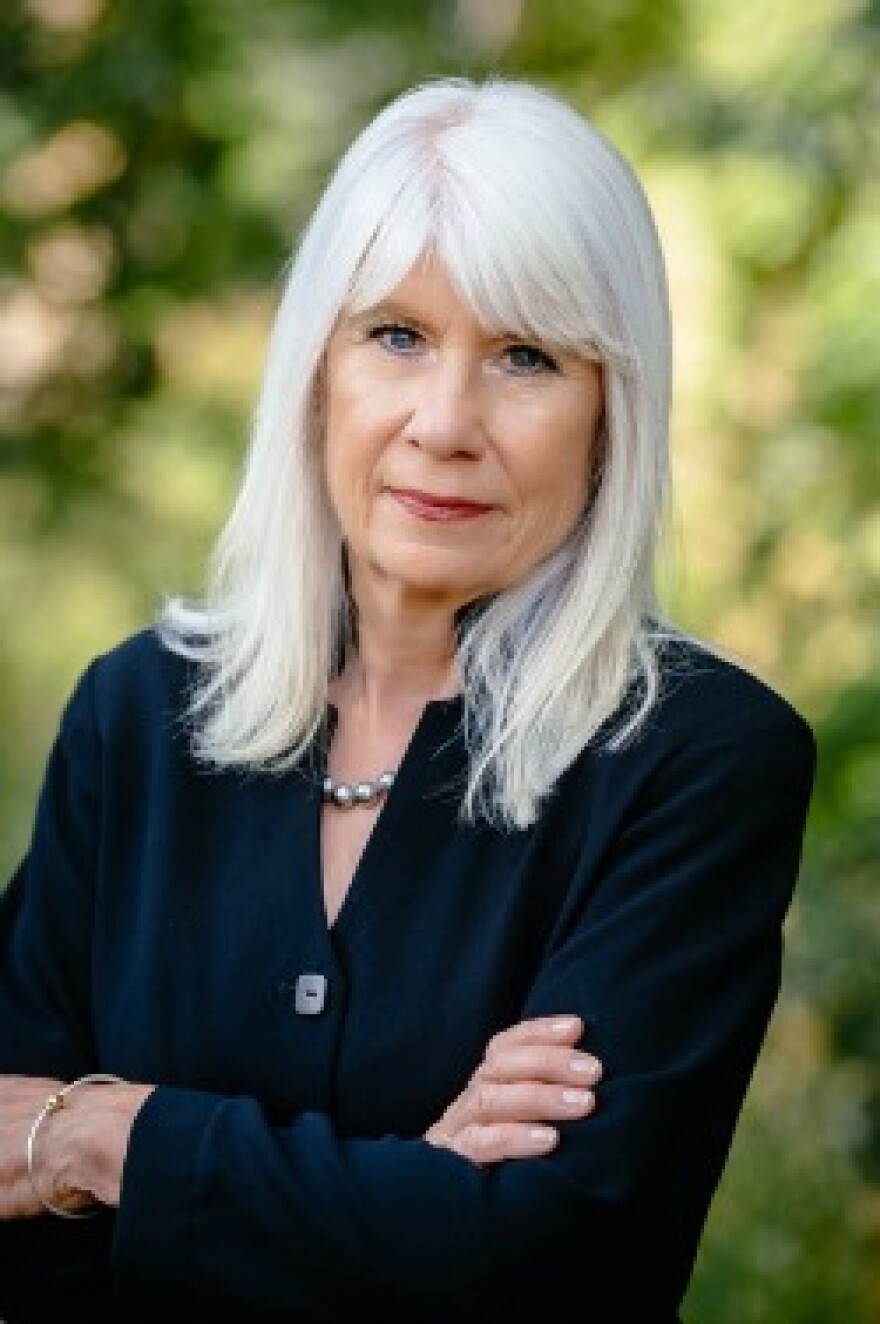Susan Saarinen remembers an unusually cluttered basement.
She and her brother Eric would weave their way through cardboard mock-ups of tram capsules, landscape designs, and chains, which hung from the ceiling to determine relationships between height and width in models of a single graceful curve.
“It’s a wonderful reminder of our past, and our ideals as we go forward,” she said of the Arch her father designed. “And it’s a perfect expression of what we can achieve if we are thoughtful, and consider making something beautiful.”
Eero Saarinen is well-known in St. Louis and beyond for his expressive, modern design. He won the privilege of designing the Jefferson Expansion Memorial in 1948—beating his father, the well-known ElielSaarinen, who also had entered. At the time, Susan Saarinen said, they worked together.

Eero and Eliel partitioned their office, erecting a large wall so that the design teams could not see each other’s work. “They were very serious competitors,” Saarinen said. “But my grandfather had taught my father how to compete, and had taught him as much as he could every time they worked together. So, that my father wanted to try his wings on a particular competition would have been a mark of success for my grandfather.”
When Eero won the right to go on to the second part of the competition, Saarinen said, her grandfather toasted his son with champagne. Then began the work that turned the basement into a take-home studio: Eero Saarinen and his team, which included Saarinen’s mother Lily and landscape architect Dan Kiley, worked on the Arch design for thirteen years.
Saarinen was surrounded by artists and designers since her birth, but that hardly encouraged her to follow in her family’s footsteps.
“The fact that my father and grandfather were famous and accomplished architects, and my grandmother and mother were accomplished designers and artists, caused me to want to find my own path, and I avoided—for the first thirty years—I avoided architecture like poison,” Saarinen said.
Instead, she acquired degrees in ceramics, weaving and even nursing, steadfastly avoiding design or anything to do with it until, one day, she was guided to landscape architecture. Then, Saarinen said, she remembered what she had always enjoyed about her grandfather Eliel’s work.
“When I was growing up, I saw that my grandfather was working with stone and wood and some metal, but beautiful metals, not steel,” she said. “And I liked those natural materials, whereas I saw my father working with concrete, which I don’t like, and steel and glass. And the materials just seemed somewhat different to me.”
“I love the outdoors and the natural world; I love the materials of the natural world,” Saarinen said. Now, she works on residential projects and commercial and public commissions in Colorado with a style and principles of her own.

Saarinen’s father and grandfather used to say, “design for your time,” she said, although her medium—the natural world—is a little more timeless than the manmade materials they used. “But their times were different, so their approach to design was different.”
“My grandfather grew up at a time when mass production was just beginning,” she said. “He was born just a little after the Industrial Revolution and was still designing for the production of one-of-a-kind things.”
“When my father was growing up, mass production was part of life. And so his designs were much more along the lines of, ‘how can we mass-produce this?’”
Eero’s design of the Arch and its surroundings, however, are singular, and representative of the kind of striking modern style he became known for.
“It’s a wonderful, simple symbol of a Gateway: of a way to move through, into a new place,” Saarinen said. “It is so simple in its form and its symbology that it is timeless.”
Eero had designs for the entirety of the Arch grounds, and wanted to include Illinois in the design. Those plans never came to fruition; Eero died in 1961, four years before construction on the Arch was completed. Saarinen said that the current redesign of the Arch grounds is extensive, but commended the architects for keeping to the spirit of the memorial. “We are not talking about a place where commerce is supposed to happen; we’re talking about a more spiritual space, and that was the intention originally.”
"Whether it will continue to be a symbol of our best selves, I guess, is up to us."
“I think the most important part of the landscape is that it is part of the monument,” she said. “It doesn’t exist by itself, and it’s not just an addition. It’s part of it.”
Considering the 50th anniversary of her father’s most famous work, Saarinen reflected on the Arch’s continued relevance. “It’s still a symbol of our past. It’s still a reminder of the ideals that we take forward into our future. But to me, the Arch has become larger than the Louisiana Purchase, or Jefferson.” It has become, she said, a symbol of the United States at its best: free-thinking, sharp, with an eye to the future.
“It’s still a beautiful symbol, but the world is getting complicated. So it’s harder to see the simplicity of the symbol now.”
Related event
“The Gateway Arch: An Icon for Yesterday, Today, and Tomorrow”
Wednesday, October 28, 12 p.m.
Missouri History Museum, 5700 Lindell Blvd., St. Louis, MO 63112
More information here
See a list of all Arch anniversary events here.
"St. Louis on the Air" discusses issues and concerns facing the St. Louis area. The show is produced by Mary Edwards, Alex Heuer and Kelly Moffitt and hosted by veteran journalist Don Marsh. Follow us on Twitter and join the conversation at @STLonAir.





